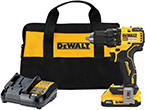Home Electrical Safety Inspection
Written by Lee Wyatt (last updated May 25, 2022)
While only a professional can really say whether the electrical system in your home is safe or not, there are a few things that you can do to see whether you need a professional to come in and do a full blown inspection. A home electrical safety can be done in relatively little time, and give you a good idea of what other steps should be taken. Here are a few things that you should keep an eye out for when you begin doing your inspection.
- Check the cover plates. Go through your home and take a look at all the electrical outlets. Each should have a cover plate, and should not be cracked. In fact, take a close look at the receptacles themselves to ensure that they are not cracked either. If you find any that are, replace them as soon as possible.
- Check your grounding. When looking at the receptacles take a look to see if they are grounded. As a general rule, plugs that have only two prong slots are not grounded and should be upgraded as soon as possible. To check for proper polarization and grounding of three prong plugs, use a receptacle analyzer.
- Test your switches. Flip the switches a few times, and check to see how much play there is. If it seems like there is too much, or if the switch wiggles when you move it back and forth, then you should have it replaced. Another good indicator that you need to replace a switch is if you happen to hear a "pop" when you turn it on or off.
- Test any GFCIs that you may have. Just because you have a ground fault circuit interrupter (GFCI) doesn't mean that you don't need to check them. Check them for proper grounding and polarization as you would with any other three prong plug, as well as by pushing the red test button. When you push the red button, the black reset button should pop out. If it doesn't, you need to replace it.
- Double check receptacles near water. It is pretty much common sense that a wet receptacle is a dangerous one. Despite this, many times those receptacles that are within arms reach of a water source are often overlooked. Check to make sure that you have a GFCI installed at any receptacle that is near a water source.
Be aware that the codes of some countries, or even states, differ, and you should check with a professional before making any serious changes to your home electrical system. If you have any doubts at all, then call in a professional to do the work for you.
Author Bio
Lee Wyatt
Contributor of numerous Tips.Net articles, Lee Wyatt is quickly becoming a regular "Jack of all trades." He is currently an independent contractor specializing in writing and editing. Contact him today for all of your writing and editing needs! Click here to contact. Learn more about Lee...
Preventing Household Bugs
While it might be nice to learn methods you can use to remove bugs from your home, wouldn't it be better to learn how to ...
Discover More
Organizing a Suitcase
Whether you are going on a business trip, or you are simply getting out of town for the weekend with the family, all ...
Discover More
What is a Serpentine Belt?
What is a serpentine belt? After all, it is one of those pieces of equipment that most mechanics check when the vehicle ...
Discover More
More Home Improvement Tips
Locating the Utility Shutoff Valve
Locating the utility shutoff valve is perhaps one of the most important skills for any homeowner to have. By knowing ...
Discover More
Childproofing Your Home
While you can take every precaution to ensure that your home is safe for your children, there is always the chance that ...
Discover More
Home Safety Necessities
Have you ever noticed how there seems to be so many different home safety products there are today? Without some careful ...
Discover More

Comments